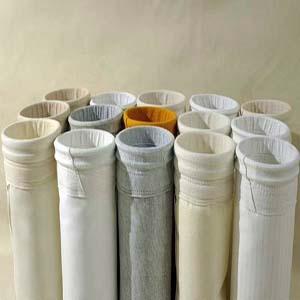Failure Analysis of Roller Press and Treatments I
I. Large Amplitude,High Noise of Roller Press
1. Causes of the materials:
(1) serious clinker segregation . If fine sizes of clinker takes high percentage, easily to flow directly between the rollers during extrusion, hardly to form a cake. In addition, clinker of buffering bin collapses and punches, causing the roller press to vibrate.
(2) The high content of C2S in the clinker mineral composition, low grindability, leads to vibration of the roller press.
Treatment:
(1) multiple discharge gates at bottom of clinker silo installed for organized collaboration unloading, or improvement of feed channel inserted to clinker silo to prevent clinker segregation.
(2) Close coordination of relevant departments to rationally optimize the system ingredients, intensify control efforts of raw material and clinker ratio, increase the C3S content of clinker to improve the clinker grindability.
2. Causes of machinery: (1) Excessively big gap between side guard plate and roller surface,as a result,partial fine materials get leaked from the gap without further crushed. Accordingly large amplitude occurs due to increasement of fine materials portion.
(2)Direct contact of side guard plate/block plate and roller causes metal friction between the two with abnormal noise.
(3) In the case of a combined grinding system, the deflector or inner cylinder of the V-type powder classifier is worn, resulting in an increase in the amount of circulating material and vibration of the roller press.
(4) Incorrect adjustment of the block iron of the roller press, which happens especially for the newly replaced squeeze roller: the shim iron is too thin, which causes the mutual friction between the moving and fixed rollers.
Solutions: (1) Timely check the gap between the side baffle of the roller surface by use of adjusting rod to keep the gap at around 2mm but no contact between the two.
(2) Regularly check and clean up the sundries at the discharge gate of the V classifier, check whether the deflector and the inner cylinder are worn or not. If so,repair or replace them in time. Check whether there is any air leakage from the buffering silo inlet gate, the air lock device of the cyclone outlet gate, and deal with it in time if any.
3. Causes of process operation: (1) When the gaps at two ends of the roller press rollers deviates greatly,large amplitude happens if without timely adjustment
(3) Some of combined grinding system may have similar reasons. Excessively small opening of circulating wind gate of V type classifier supplies insufficient air volume to separate fine powders. In consequence,V classifier operated below its efficient performance of classification and scattering supplies higher percentage of smaller powder among mixed media and fine return materials. Large amplitude occurs accordingly.
Solutions:
(1) Adjust the pressure of the roller in time to reduce the deviation of the rollers.
(2) Properly adjust circulating fan gate to ensure sufficient air volume, improving scattering and classifying functions of the V classifier.
Increase the feeding amount of the V-type powder classifier, thereby reducing the amount of returned materials to reduce percentage of fine powder of the mixed materials to enter the rollers, and thus improve the grinding efficiency.
II. Roller Deviation
Causes:
1.Segregation of Materials to feed roller press, that is material sizes of one roller end bigger than that of the other. Unstable,non-dense and non-full material column is easily formed,whose impact to rollers is huge. In addition to in-uniform,unstable pressure to the rollers,deviation occurs when hydraulic system fails to correct in time.
2. Discharge pipe to the rollers is biased. The feed materials fail vertical feed to the two rollers center.
3. Edge leakage of two side guard plates is not uniform due to big gap between the plates and roller surface or the former being worn out.
4. Different air filling pressure of left & right energy accumulators causes big working pressure difference and inuniform gaps at the two ends of rollers.
5. Different thickness of the left and right block irons. Hole on one roller surface without timely treatment.
Treatment:
1. Strictly control material feed sizes to the rollers to ensure the uniform distribution of the material in the warehouse and reduce the segregation
2. It must be ensured that the material enters the middle of the two rollers as vertically as possible.
3. Use the ejector pins on both sides to adjust the side guard plates. Generally, the smaller the gap between side guard plates and the roller surface is, the better.
4. Stop the accumulator to check the calibration pressure and replenish gas in time to ensure that the pressure on both sides basically equal.
5. Timely replace and adjust the left and right block irons to ensure same thickness.
6. Potholes on the roller surface need to be repaired in time.
Special attention: large iron pieces or other foreign matters mixed in the materials fed to roller press could also cause abnormal vibration cause a large gap between the rollers even to sudden stop so the working condition of the iron remover should be checked at interval to ensure its magnetic properties.





